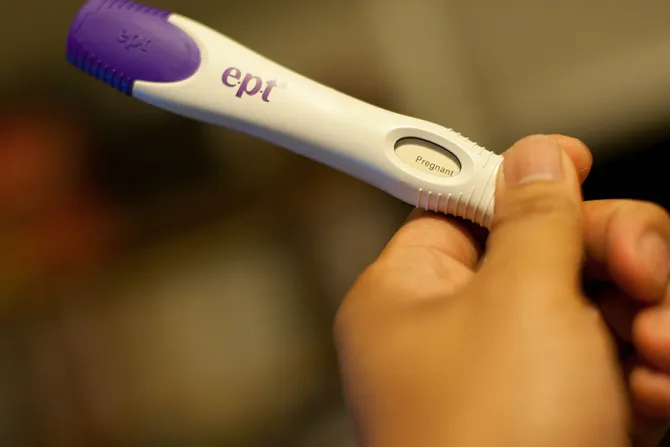Washington D.C., May 23, 2019 / 11:19 am
While the number of abortions procured in the US has steadily declined in recent decades, recent data indicate that this decline may be slowing as the use of chemical abortions rises.
The Charlotte Lozier Institute, the research arm of the pro-life organization Susan B. Anthony List, issued a report this month that analyzed the 2017 abortion figures released by 37 states.
Chuck Donovan, president of Charlotte Lozier Institute, told CNA that 2018 data from six states indicate a continuance of the increasing use of chemical abortions.
"What we may be seeing is that, through the promotion of chemical abortions and increasing the range of distribution ... the long-term decline could be coming to an end," he said.
The reported stated that in 2017 more than 470,000 abortions occurred in 37 states and that 39% of these were chemically induced. Out of 31 states, it highlighted an increased tendency to procure chemical abortions, and, out of 25 states, it mapped the trend of these chemical procedures from 2008 to 2017.
"Since 2008, total abortions among these 25 states have declined by 23 percent, while chemical abortions have increased by 68 percent. Between 2015 and 2017, total abortions fell by three percent, while chemical abortions rose by almost 20 percent," the report stated.
As opposed to surgical abortions, chemical procedures induce termination through a combination of mifepristone and misoprostol, which the U.S. Food and Drug Administration loosened restrictions on in 2000 and 2016. Since these have become more available, chemical abortions have widely increased.
Abortions have been decreasing since the '90s, but the decline has slowed in recent years, even showing a slight increase in abortions in some states. Out of 30 states that reported on both abortions and chemical abortions in the past two years, 14 of them saw an escalation in abortions, according to the report.
Donovan said the trend follows the abortion industry's push for telemedicine. He said chemical abortives have a wider range of distribution than a medical associate at a physical clinic.
"When you get to chemical abortions, then one or two doctors with telemedicine or things like that can cover a wider area, and we see the abortion industry moving to make the distribution of chemical abortions available through every pharmacy in the country...as well as through the mail," he said.
"Conceivably, a doctor could reach a 15, 20 county area and dispense the drugs without ever seeing the patent. Telemedicine and chemical abortions will be that much more aggressively marketed and reach a wider range of people."
According to the report, there is an underestimation of abortions in the U.S. both in its numbers and potential dangers, especially some of the risks for chemical abortions. Ohio issued a report on the adverse effects of chemical abortives, noting that women are having increased difficulties as a result of mifepristone.
"Chemical abortions have a much higher complication rate than surgical abortions performed at the same point in pregnancy and result in more frequent visits to the emergency room," the report read.
A major concern, the reported added, is the lack of information on abortion statistics from the Center for Disease Control and Prevention. Among other issues, some states do not report their abortion numbers or problems, and some states only report on residents who received abortions.
For example, California, Maryland, and New Hampshire do not disclose their abortion information to the CDC, though together they account for 20% of all abortions in the U.S., the report stated. Ohio is also one of the only states to require abortion complications to be disclosed to the government. The FDA only tracks abortions that have resulted in a woman's death.
"The lack of accurate chemical abortion data at the national level means that adverse events caused by chemically induced abortions may be much more common than researchers realize," the reported stated.
(Story continues below)
Donovan said the CDC will receive real time information on a state's births and deaths, but abortion numbers are about two years behind. To keep women better educated on the dangers, he said, the government should be more determined to use modern technology to track these statistics.
"These reports are not giving us a true picture of the harm that chemical abortions do, but that harm is higher than surgical abortions done at the same stage of pregnency. We should be on top of this, women should be warned of the heightened risk of using these drugs and it should be tracked by the medical monitory system. That's not happening," he said.
Although there is a concern for the future, Donovan expressed gratitude that there has still been a decline in abortions, noting that the pro-life movement and increase in pregnancy centers have likely impacted the decrease in abortions and changes in attitude toward unexpected pregnancies.
"Women are more inclined to keep an unexpected pregnancy than they were a couple of decades ago. Things like ultrasounds, more services, and, possibly, expanded health care coverage for women; those things have been beneficial," he said.
"We don't want to discount all of the decline, we are just concerned that it may be coming to an end and we should know why and be prepared to the health impacts of that."






